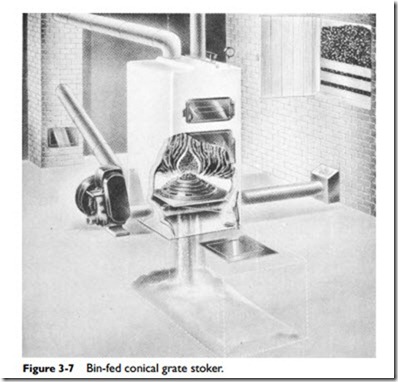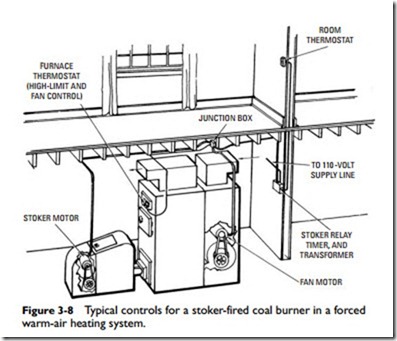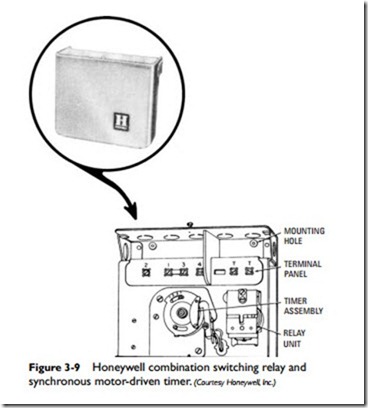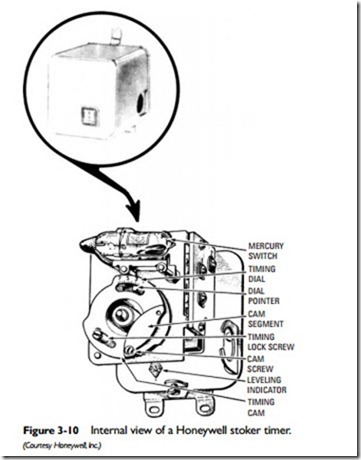Stoker Automatic Controls
Figure 3-8 illustrates typical controls for a stoker in a forced warm- air heating system. There are approximately three basic automatic controls necessary for satisfactory operation of the stoker. These three controls are as follows:
1. Thermostat.
2. Limit control.
3. Hold-fire control.
The purpose of the thermostat is to start the fire when the room temperature falls below a predetermined point and to stop it when the temperature again rises to normal. The thermostat setting should be adjusted to give comfortable room temperature. Usually a setting between 72F° and 75F° is desirable.
The limit control stops the stoker should the furnace or boiler pressure become greater than the setting of the control. Furnace limit switches on warm-air gravity installations usually require settings above 300F . Hot-water limit switches on hot-water systems usually require settings above 160F . Steam pressure controls on steam pressure installations usually require settings of 2 to 5 lbs.
The purpose of the hold-fire control is to produce a stoker operation at intervals during mild weather in order to maintain fire when the thermostat is not demanding heat. Sometimes the
hold-fire control feeds either too much or too little coal to the retort. The former results in overheating, and the latter may cause the fire to go out. It is best to call a service representative of the stoker manufacturer to adjust the hold-fire control, because this is a complicated mechanism. The two types of hold-fire controls are interval timers and stack temperature control switches.
Timers may be adjusted to give various-length firing periods so that the stoker is operated for a few minutes at preset intervals. This is done to keep the fire alive during cool weather when little heat is required. The cycle of operation may be set for either 30- minute or 1-hour intervals.
Figures 3-9 and 3-10 show two examples of typical timers used on stokers. The combination switching relay and syn- chronous motor-driven timer shown in Figure 3-9 provides periodic burner operation so that the fire can be maintained during times when the thermostat is not demanding heat. It may be used with any two-wire, 24-volt thermostat or operating controller. This particular timer is adjustable from 1⁄2 to 71⁄2 minutes every 30 or 60 minutes.
The timer shown in Figure 3-10 is designed for line voltage switching. When used with a line voltage controller, it maintains the stoker fire by providing short on periods between the controller off periods. Timing may be adjusted from 1 to 71⁄2 minutes at 30- or 60-minute intervals.
The stack switch (or stack thermostat) starts the stoker when the stack temperature becomes lower than a predetermined point and operates it until the fire is again kindled to a degree that will guarantee that it will not go out.
Stack switches are not found on all stokers, but they should be required in areas where electric power failures are long enough to let the fire go out. The stack switch will keep the stoker from filling the cold firepot with coal as soon as the electricity goes on again.
Sometimes a light-sensitive electronic device (such as an electric eye) is used instead of a stack switch.



